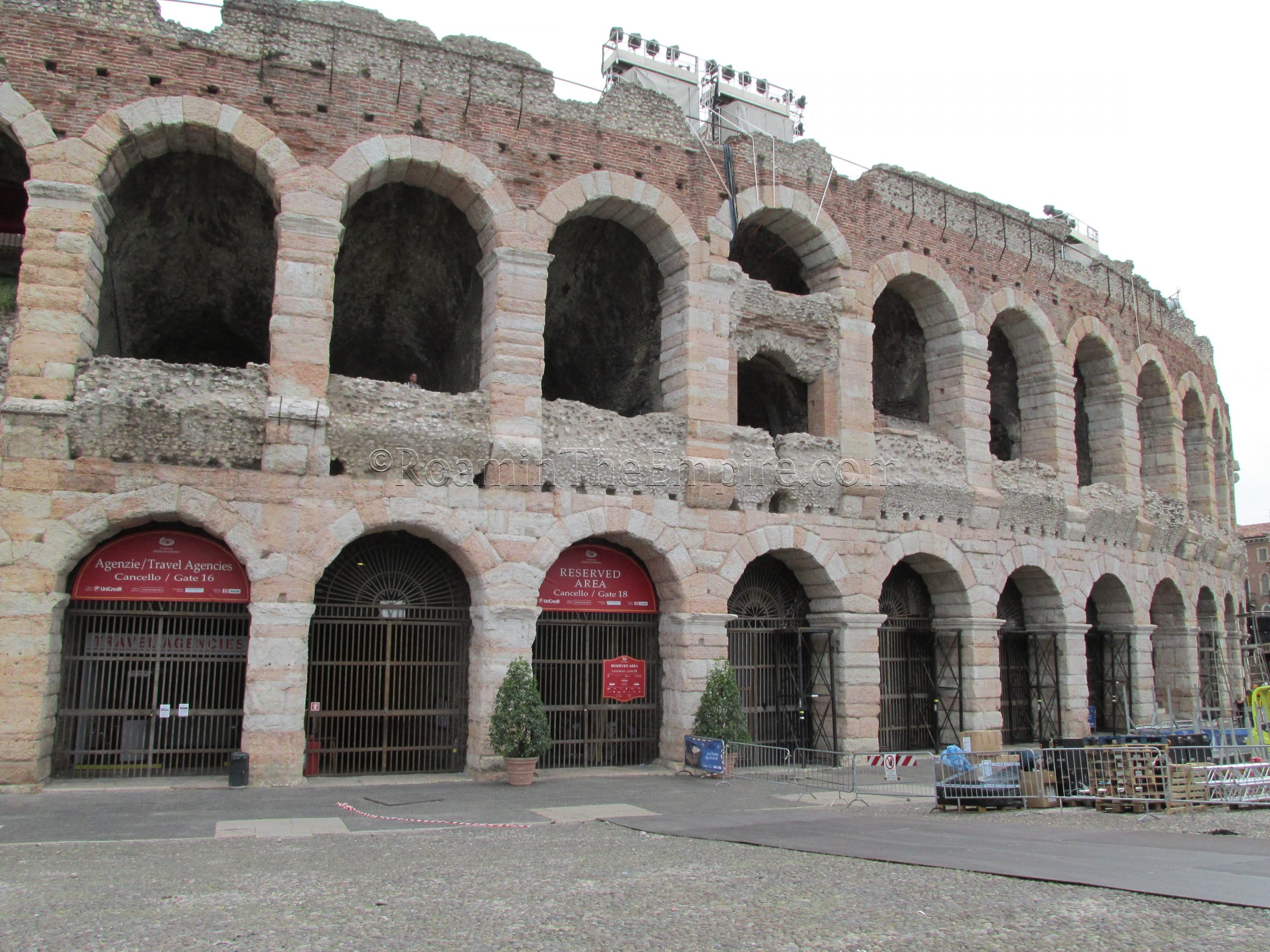
Situated along the present day Adige River (the Athesis in antiquity) is the city of Verona, bearing the same name in the Roman period as it does today. The pre-Roman origins of settlement in the area are a matter of some debate. By some accounts it was the territory of the Euganei, a semi-historical italic people who give their name to the Euganean Hills between Verona and Patavium (Padua). The Euganei feature in a story from Livy upon which a group of Enetians (from Paphlagonia) and Trojan refugees (who would combine to form the Veneti) drove the Euganei from their lands between the Alps and the Adriatic Sea, leading possibly to the territory of Verona belonging to the Veneti following this episode. Pliny the Elder attributes the area of Verona as belonging to the Euganei and the Raeti. The territory may also have belonged to the poorly attributed Arusnate, who are thought to have inhabited the eastern shores of Lake Garda and who seem to have given their name to the Pagus Arusnatium, the Roman name for the area to the north of Verona. The Arusnate alternatively may have been an Etruscan family and thus the Etruscans had some hand in the territory. At some point, probably in the 6th century BCE, the Gallic Cenomani took control of the lands and had a settlement in the vicinity of Verona.
The Cenomani and Veneti allied with Rome against the Boii and Insubres in 225 BCE, fighting alongside the Romans at the Battle of Telemon which defeated the Boii and Insubres coalition and marked the beginning of the Roman push north of the Po River in earnest. The Cenomani remained loyal to Rome through Hannibal’s campaigns in Italy, but joined with the Carthaginians, along with the rest of Cisalpine Gaul, in the latter stages of the Second Punic War. Again a few years later in 197 BCE they joined with the Insubres against the Romans, but switched sides mid-battle, betraying the Insubres and currying some favor with the Romans, who allowed the Cenomani cities to remain relatively independent amid the land confiscations of other Gallic tribes in the following years.
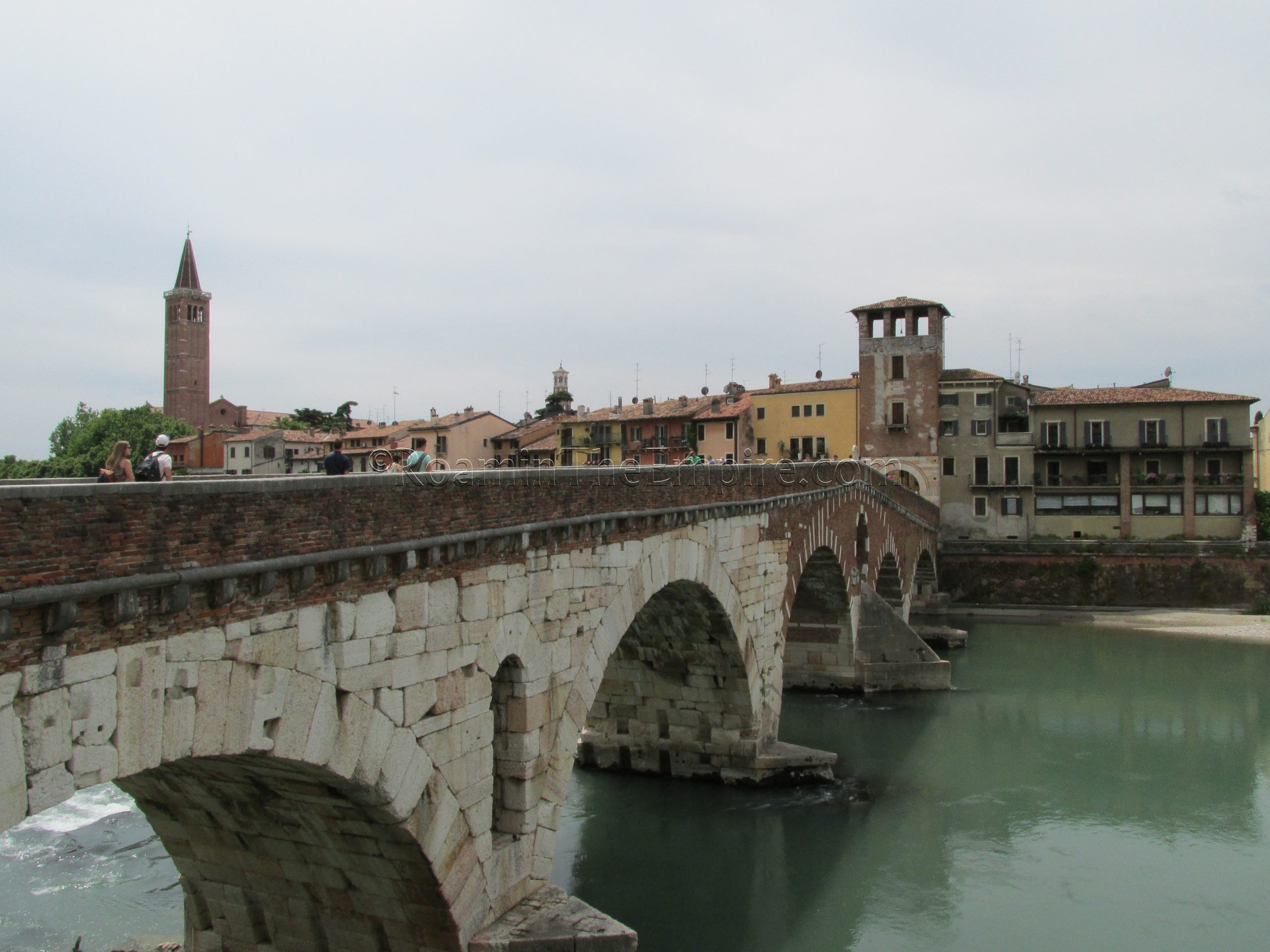
Verona was included as a stop along the Via Postumia, constructed across Cisalpine Gaul in 148 BCE. In 89 BCE, a Roman colony was established at Verona. A few years later, circa 87-84 BCE, the famous Roman poet Catullus was born there. The Cenomani cities, perhaps including Verona, seem to have still maintained some nominal autonomy as late as the mid-1st century BCE, as Cicero states that treaties with the Cenomani and Insubres were still in effect. The city received municpium in 49 BCE along with the rest of Cisalpine Gaul. Verona grew to become one of the most important in the region of Venetia. During the civil wars of 69 CE, Verona served as a base of operations for the supporters of Vespasian in actions in the region against the supporters of Vitellius late in the year. The city grew through the early empire, Martial refers to the city as being ‘great’ in the 1st century CE.
A series of four major battles were fought in and around Verona between 249 CE and 402 CE. Amid the crisis of the third century, a battle was fought between the emperor Philip the Arab and the usurper Decius outside Verona in 249 CE, resulting in the death of Philip the Arab and succession of Decius as emperor. During the reign of Carinus, in 285 CE, the usurper Aurelius Julianus, governor of Venetia, was defeated and killed at a battle near the city. Another battle was fought between Constantine the Great and Maxentius’ general Ruricius Pompeianus at Verona in 312 CE, a scene of which is depicted on the Arch of Constantine in Rome. The result was a Constantinian victory (and the death of Pompeianus) which paved the way for his ultimate victory at Milvian Bridge later that year. Finally, in 402 CE the Visigoth Alaric I was defeated by Stilicho at Verona, after occupying the city, forcing the former to withdraw from Italy. Verona was sacked, along with many other major cities in Northern Italy, by Attila the Hun around 451-452 CE.
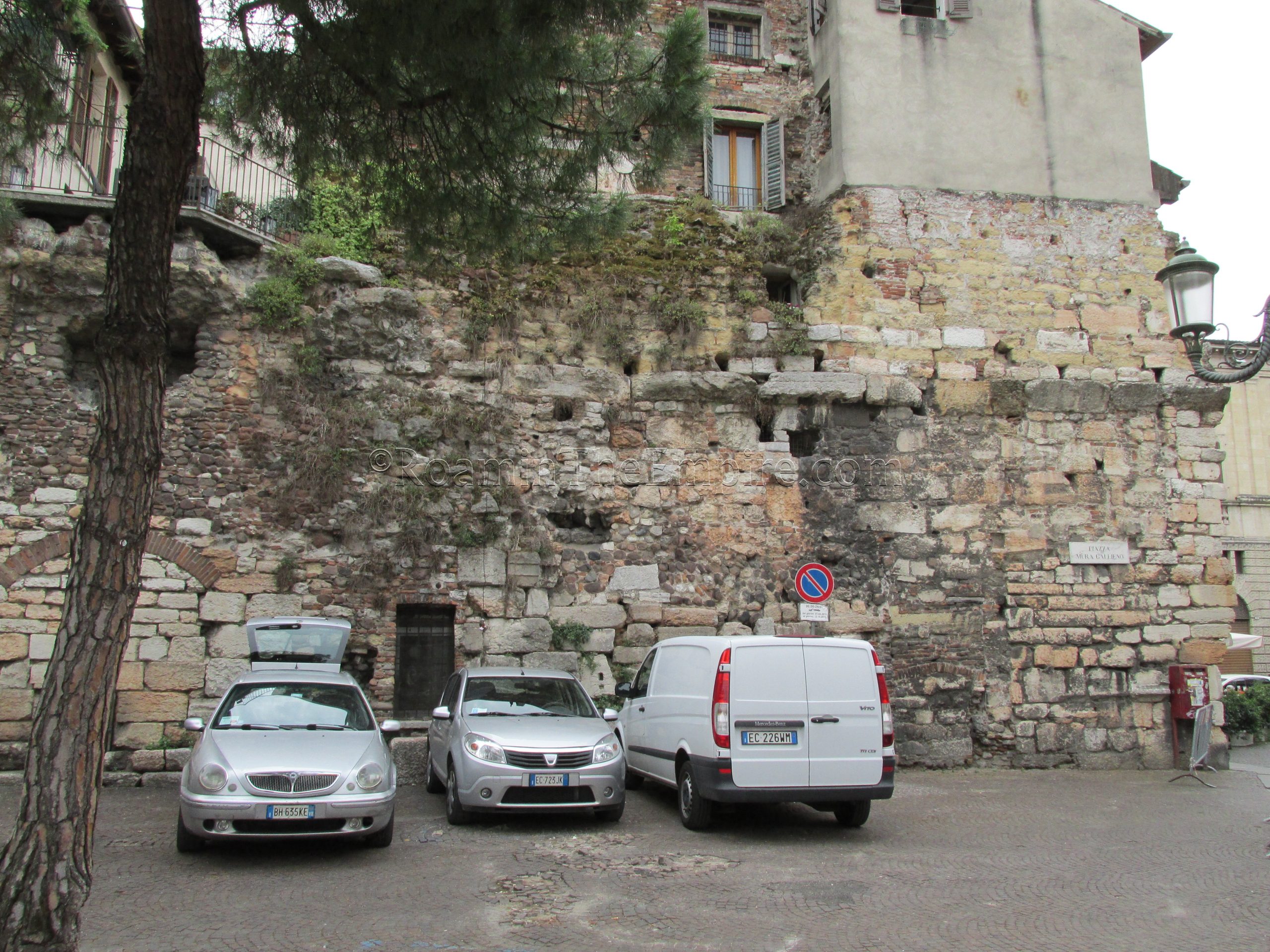
Gallienus is known to have fortified the walls at Verona during his reign in the middle of the 3rd century CE, perhaps after repelling the revolt of Regalianus near the city around 260 CE or in response to Alamanni raids. At some point, Verona receives the title of colonia. Catullus refers to it as such, but it likely did not receive an initial title of Colonia Augusta Verona until the early 1st century CE, and then a second time during the reign of Gallienus as Colonia Augusta Verona nova Gallieniana. The city saw some decline in the 5th century CE before falling into the hands of Odacer after the collapse of the Roman political establishment in 476 CE.
Getting There: Verona is one of the larger cities in Italy, the largest in Veneto, and as such is pretty well connected to other cities in the region and country via train and bus. There is an airport outside of town, Aeroporto Valerio Catullo (named after Catullus) that serves domestic and other European destinations. The old city, where most of the Roman monuments are located, is only about a 20 minute walk from the main train station, and limited auto traffic in the old city makes walking around a pretty easy endeavor.
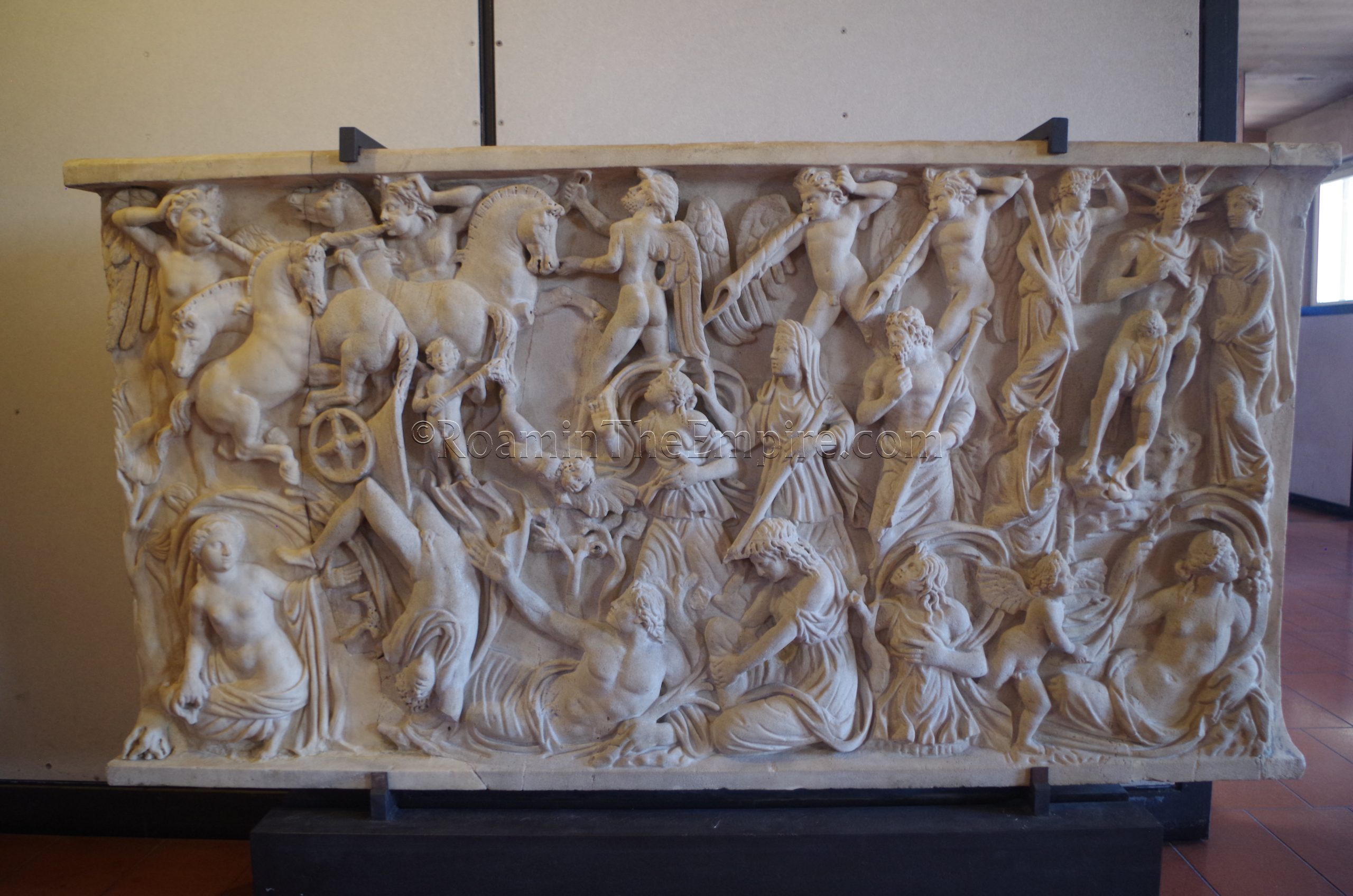
Museo Lapidario Maffeiano
The easiest route, particularly if one is coming from the train station, through Roman Verona starts at the double medieval gate, I Portini della Bra. Just inside the gate on the west side is the Museo Lapidario Maffeiano at Piazza Bra 28. The lapidary museum is open Tuesday through Sunday from 8:30 to 14:00 and is closed on Mondays. Admission is 4.50 Euro for a single entry, or a combination ticket with the arena is also available for 11 Euro.
The Museo Lapidario Maffeiano hosts a collection assembled starting in the 18th century by Marquis Scipione Maffei, for whom it is named. As such, it is not a collection assembled only from inscriptions and reliefs found in the area of Verona, but rather from all across the Mediterranean. The museum is essentially divided up into three parts; the building houses a predominately Roman (and some Etruscan) collection on the top floor, and a predominately Greek collection on the bottom floor. Both feature inscriptions and reliefs. In the courtyard is an inscription collection that seems to be mostly made up from altars and funerary stele taken from the northern part of Italy (though I was booted out of the museum before I could see the whole collection in that area; apparently the 14:00 closing time actually means 13:30).
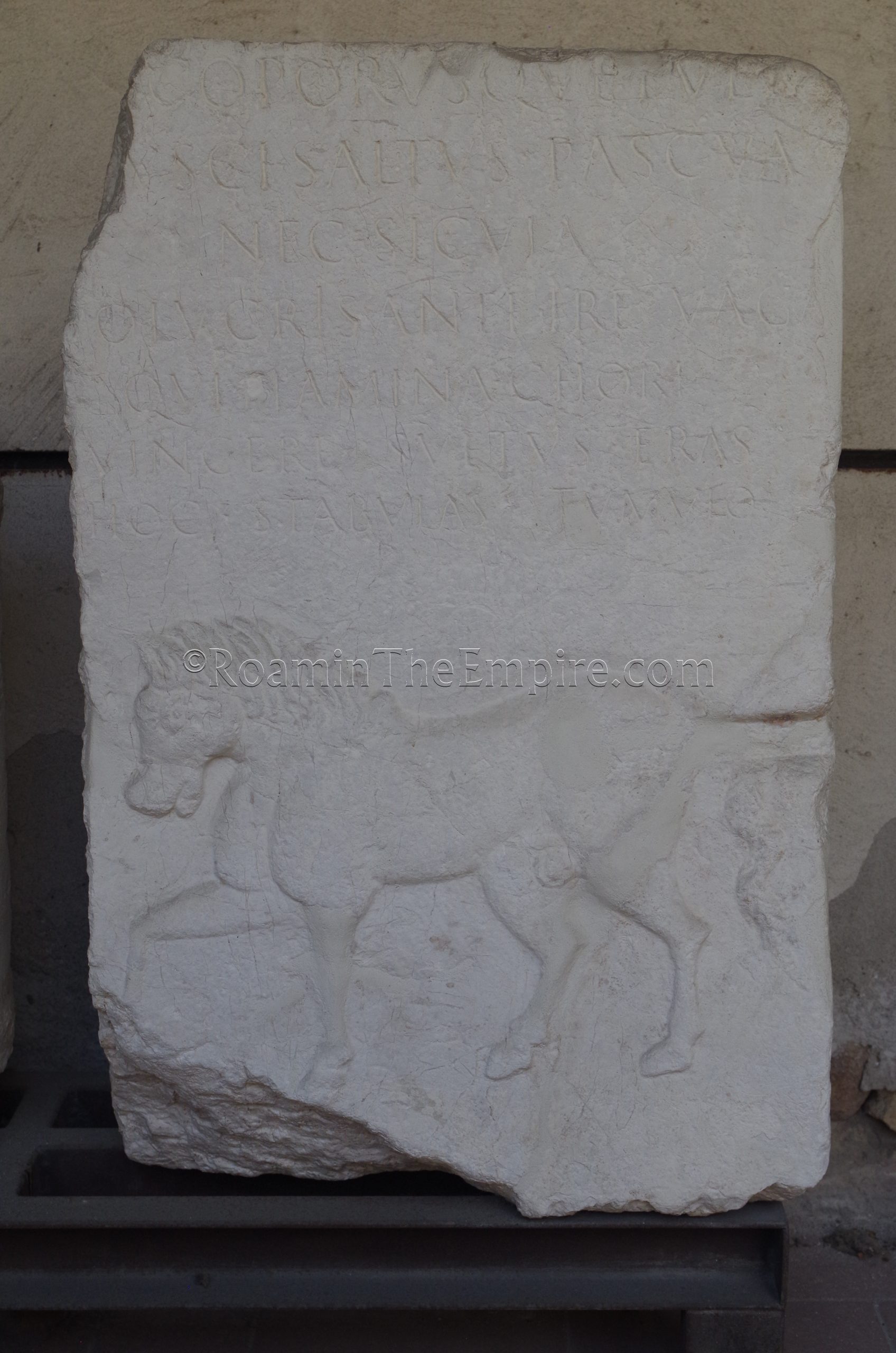
Some pieces that I was particularly struck by were the Mithraic tauroctony relief, which I’m always excited to see. Nearby is an ornately carved sarcophagus face depicting the myth of Phaethon. Both are in the Roman section. In the Greek section there is a lengthy four slab long inscription of the will of a woman from Thera dated to the 3rd century BCE. Also, a dedicatory inscription marking the embellishment of decorative works on a sanctuary dedicated to the Egyptian divinities on Delos, dated to 112-111 BCE. In the courtyard is perhaps one of my favorite items from either of the museums in Verona; a funerary dedication to a horse. The stele is inscribed with a relief of said horse and the poetic epitaph; “you who outran the wandering birds and beat the winds, graze no longer in the Tuscan or Siculan woods, but in this tomb.”
It’s an overall great collection and has a lot of interesting pieces from the breadth of the Mediterranean. The early closing time makes it a little difficult, logistically. My first visit to Verona, I wasn’t able to see it because I didn’t arrive until the early afternoon and it was already closed. It is well worth the stop, especially if you plan to see the amphitheater, which is a 10 Euro admission on its own, so buying the combo ticket, the museum is just a 1 Euro addition.
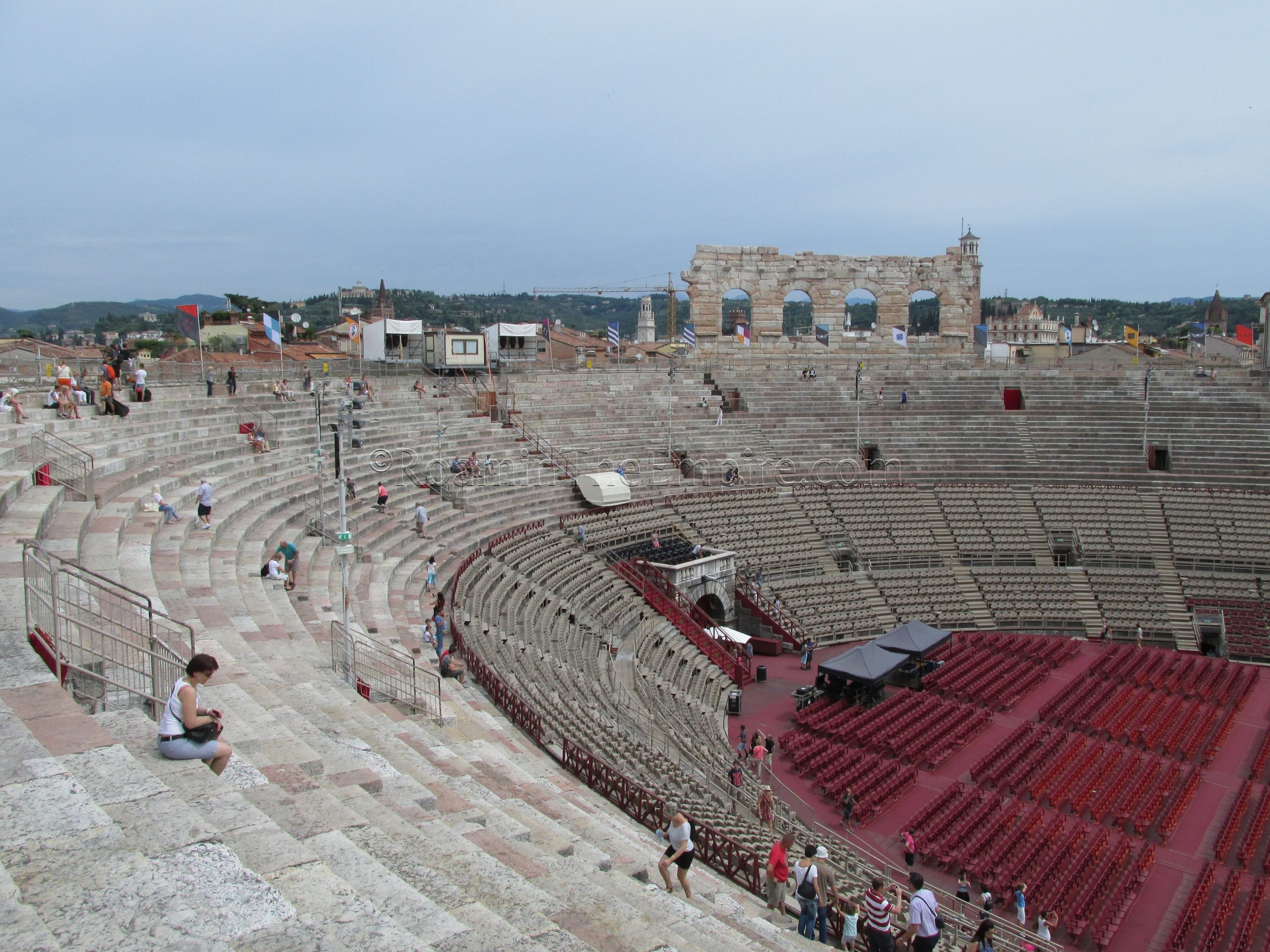
Amphitheater
Just across the Piazza Bra from the museum is the Arena di Verona, the amphitheater. Located at Piazza Bra 1, the amphitheater is open Tuesday through Sunday from 9:00 to 18:00. It is closed on Mondays. Admission, again, is 10 Euros for just the amphitheater or 11 Euros for the amphitheater and Museo Lapidario Maffeiano. Modern performances are held in the amphitheater, particularly in the summer, but also well into September, so it is best to check the website for entrance restrictions related to performances.
The amphitheater was constructed around 30 CE in an area that was, at the time, outside the city walls. The structure is estimated to have held about 30,000 spectators, an above average number for the standard of amphitheaters. The distinctive pink and white limestone used in the construction was quarried from the Valpolicella (vallis pulicellae) region to the north of the city, and source of the stone for many of the Roman monuments. It is possible to even see some fossils exposed on the face of the blocks inside the amphitheater. The amphitheater seems to have fell into some degree of disrepair in the late empire, but still seems to have functioned until the spectacles were banned.
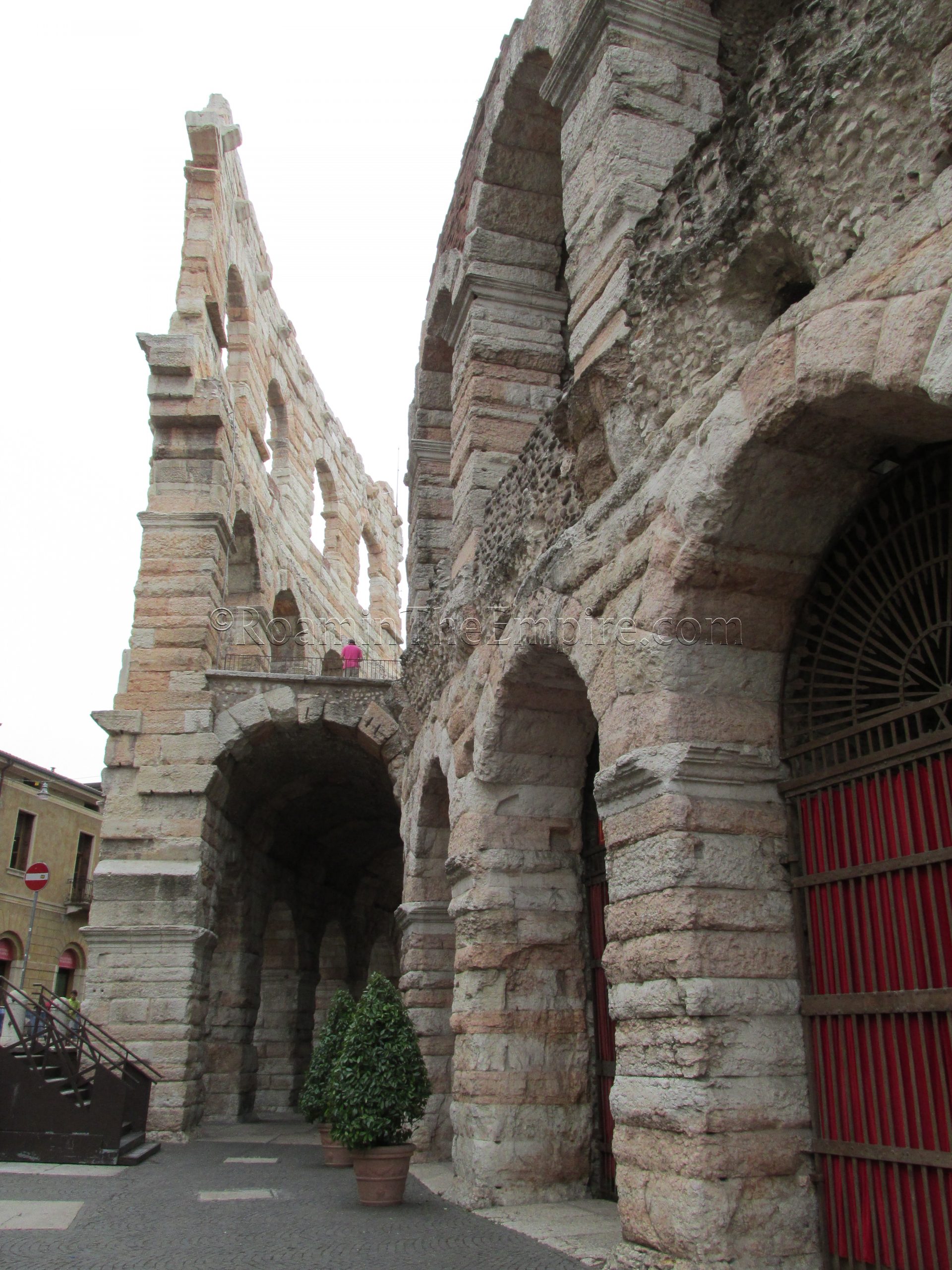
Pliny the Younger mentions the staging of gladiatorial games in Verona in his letter to his friend Maximus in the late 1st century CE. In it, he reassures Maximus about his effort to put on the games in his deceased wife’s honor despite the delay of some animals due to weather. These games were presumably held in this amphitheater. The outer rings of the amphitheater were heavily damaged in a series of earthquakes in the 12th century CE, and all but a small section was destroyed or quarried around that time. It’s likely that was also some partial destruction of this outer ring by Theodoric in order to bolster the walls in the late 5th or early 6th century CE.
Access in the amphitheater is about what one would expect. There are a few of the interior corridors accessible, as well as much of the northern part of the cavea. Worth nothing, the inscription above one of the entrances, beneath the box seating, dates to the 18th century despite the use of Latin and Roman style abbreviations. It is, in fact, an inscription noting the visit of the Holy Roman Emperor Joseph II. The south side of the amphitheater is largely restricted, particularly during the event season as it is where the ‘backstage’ preparation is occurring. There is a lot of reconstruction and modern seating for the contemporary use as a concert/opera venue. From the outside it’s really amazing, but the interior is honestly a bit of a letdown. It’s interesting to see the stonework up close and the fossils, but the degree of access is really limited for the price. It’s still very cool, but, the price might only really be worth it for those with a particular interest.
At the southwest corner of the amphitheater is Piazzetta Mura Gallieno, where a small section of the Gallienian walls can be seen. These are incorporated into the buildings on the south side of the open space of the piazzetta. Prior to the construction of these walls, the amphitheater was, notably, outside the city walls. With the restoration and extention of the walls by Gallienus, however, the amphitheater was incorporated within them. Though their close proximity to the amphitheater shows just how narrowly they would have been skirting the structure to enclose it.
Sources:
Bolla, Margherita. The Verona Arena: The Building and its History in 1913-2013. Milan, 2013.
Livy. Ab Urbe Condita, 1.1, 5.35, 32.30
Grant, Michael. A Guide to the Ancient World: A Dictionary of Classical Place Names. New York: Barnes & Noble Books, 1997
Martial. Epigrams, 14.195.
Pliny the Elder. Historia Naturalis, 3.23.
Pliny the Younger. Epistulae, VI.34.
Roncaglia, Corolynn E. Northern Italy in the Roman World. Johns Hopkins University Press, 2018.
Scullard, H. H. A History of the Roman World 753 to 146 BCE. London: Routledge, 1980.
Stillwell, Richard, William L. MacDonald, and Marian Holland. McAllister. The Princeton Encyclopedia of Classical Sites. Princeton, NJ: Princeton U Press, 1976.
Wellesley, Kenneth. The Long Year A.D. 69. Baltimore: Westview Press, 1976.


